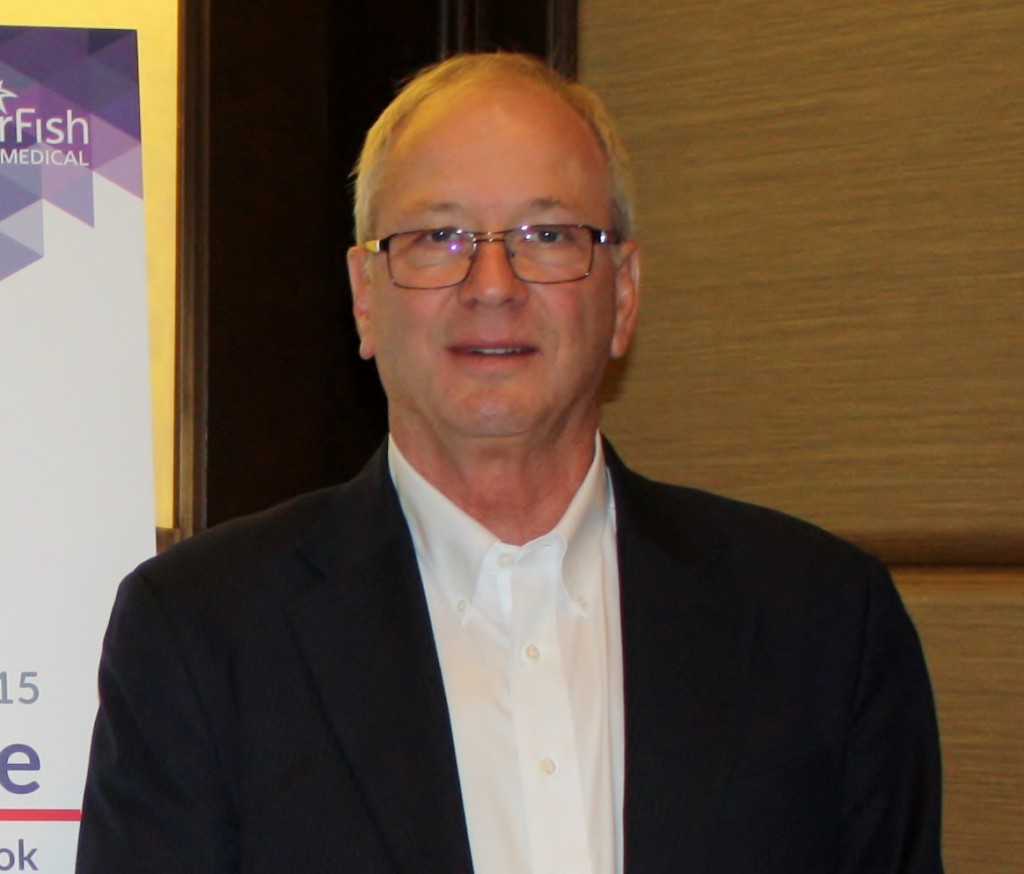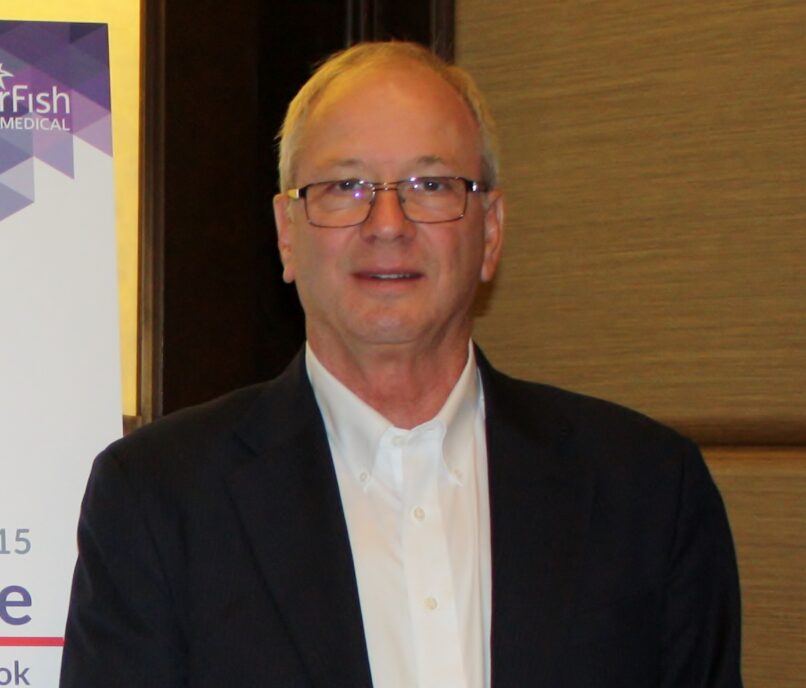StarFish Medical recently worked with Larry Spears, Former Deputy Director FDA/CDRH Office of Compliance and FDA Investigations, as part of our ongoing efforts to improve and train our quality practices. During our breaks, I spoke with Larry about life after the FDA, how firms can best prepare for regulatory submissions, and the new open nature of the FDA. I found his answers candid, thoughtful and useful, so I’m sharing them with StarFish readers.
Life after FDA: When I decided to leave the FDA/CDRH Office of Compliance and enter consulting, I wanted to join a firm with a strong reputation and deep roots in providing consulting services. I ended up choosing a major international life sciences consulting firm. They had a strong reputation in their tax, accounting and financial services practices and at the time they were looking to build a Life Sciences practice. That was important to me and certainly in my area. As for the transition, it was challenging, but it was also rewarding. I learned a lot about what consulting really is. How to sell work, to write proposals, and to work in teams. To really get to understand client expectations and how to meet those expectations. It took a while to get through that process—I was with that firm for two years—but that was a very good experience.

What were key learnings? How to prepare proposals, scope out work. How to look at their needs and match our services with those needs. I was trying to figure that out. That was a big part of it- making sure that you are preparing to deliver and deliver what the client needs and what they’re looking for as opposed to off the shelf products that you want to sell.
I looked at building relationships, particularly with senior level people in client organizations. I learned about the nuts and bolts of preparing proposals. I learned to work in teams. The firm operates with a team-oriented culture in terms of doing projects.
Doing your own thing: I felt like although I had great experiences at the firm I was not able to be the master of my destiny. I didn’t have a lot of choice in some of the work I would do. I didn’t get to drive that like I wanted. I wanted more flexibility, a better travel schedule. After leaving that firm, I first worked with a friend of mine who has a consulting service. He helped me get started by identifying clients and marketing. I started connecting with organizations to do work through other consultancies and law firms. I’ve only been on my own for just under a year. I’m still learning and have a lot to learn.
Surprises from being on the other side of FDA: Pretty stark was the difference in response from firms when you are with the FDA vs. with a consulting firm. It might seem pretty obvious, but it was pretty stark to me. When you are with the FDA when you make a call or ask a question, you get an immediate response. You want a meeting? OK, we’ll come in. You want this? OK, we’ll do that. Not so much when you’re working as a consultant. When you`re working for a consulting firm, it`s a bit harder to make some of the connections. That was a bit of a surprise.
I was also surprised how competitive consulting is and how different firms have a hard time aligning their services with what the client is looking for. They have a disconnect.
Any examples? At my former consulting firm I would discuss that our practice provides end to end solutions– a soup to nuts solution. Larger firms would respond: “We don’t really need an end to end solution. That’s not what we’re looking for. We believe we have a strong quality team and a strong regulatory team. We have all the different bases covered. But we do need help in this or that specific area for a short term project.” That was not what the firm was focused on. A lot of the smaller projects the firm would not do. They would prefer the bigger ones with more long term potential. That was a bit of a surprise to me.
Typical things medical device firms struggle with: I mentioned competition already. Making sure they can stay competitive and visible in the market place. It’s important for them to have good quality systems and to balance that with staying viable in an ever changing regulatory environment.
One of the things that’s a real challenge, which some struggle with, is the changing regulatory landscape There are many new regulations, from FDA, EU and Japan. So many new requirements are coming out. Getting their arms around that, understanding the impact, and planning for how to comply is a real challenge.
Some firms struggle with what the FDA is looking for. What does FDA need in a premarket submission? How do they go about reviewing a premarket submission? How much data does the firm need to provide to FDA? Firms want to make sure they are responsive, but they also want to make sure they don’t spend too much time in developing data and that they are efficient in the process.
Any advice on understanding FDA expectations: Firms in the US have a FDA district office and need to build a strong relationship with them, so the first time they are contacted by the Agency is not for an inspection or a warning letter response. That should be done when a new firm comes into a particular area. They reach out to the district office, let them know they are there and that they are in business. They tell them what kind of product they make. They tell them how big they are. What their market is. That type of thing. I think some firms are afraid to do that. Afraid because they believe they’ve made themselves a target in some sort of way. That’s not necessarily the case. Firms have to register with the FDA regardless, they have to list their products. It`s better to have a positive experience and try to take the first step in interacting with the FDA.
For foreign firms I would do the same thing with the centers. It`s a bit harder to make connections – particularly for smaller firms. A larger firm can call up the Center Director and say we want to come in and have a meeting because we`re going to open two new facilities in France, for example. We want to talk about what we`re doing there and what the impacts are. The center director may be more responsive to those requests. Smaller firms are going to have a bit more of a challenge. But I still think it’s worth that. Worth saying: “We have an innovative new product and we want to meet with the center.” It may be that you don`t want to meet with the center director, but an office in center depending upon the real impact your product will have on the market. If you`re a small firm with just a few products you may want to meet with The Office of Compliance or Device Evaluation if you`re looking for advice or guidance for 510(k), for example.
Planning an FDA submission: Initially it’s getting to understand what the regulations are. I think that’s really important. Studying the FDA website. Getting training if you need to (publicly available in CDRH Learn). Consider getting consulting support if it’s needed. For firms doing their first submission, [Tweetthis]meet with the FDA early, even in the concept stage.[/Tweetthis] A phone call to the FDA could be useful.
You want to establish the strong relationships I mentioned earlier. When you get to the point where you determine you need a new 510(k), it’s really important to have a meeting with Office of Device Evaluation or Office of In Vitro Diagnostics, particularly the appropriate office or branch that will be reviewing your submission. Talk with them to get an understanding, making sure they know what you’re going to be submitting. Ask them, run specific question by them in terms of what you need to know and what you are thinking and see how that aligns with how they’re thinking. All too often there have been situations where firms have read the regulations, they interpreted them in a certain way and they were not in line with the FDA expectations for compliance. The FDA will talk to you, they will interact with you, but it’s important that you come prepared with your questions.
More user-friendly FDA: The FDA is considerably more user-friendly than they used to be. More than ever as far as I can tell. They are really very transparent about their processes, about their thinking, and about their findings and conclusions. They put a tremendous amount of data on their website, which is well maintained and updated fairly frequently. All kinds of information from how to register your establishment and list your products, to guidance on pre-market submissions. There are FAQs on recalls, warning letters, correction removals and tremendous amount of data on FDA findings. I really think there has been a ramp up of being more transparent in recent years, more particularly since the new commissioner came on board in 2009.
What drove that change? It was partly the commissioner, but it’s actually broader than the commissioner. It’s a government-wide initiative to be more open. The entire Obama Administration mandated that the different agencies provide more information to the public. I think there already was a lot of transparency, but changes in technology like mobile health just created even more need for better interactions and exchange of information. The FDA not only needed to share information, but to say “we’re really not familiar with this particular new technology”. They’re trying to figure out how they should regulate a new area or if they should at all, for example recent guidance of general wellness, mobile apps, eMDS, and UDI.
Impact when the administration changes in 2016: I believe they are going to continue to be transparent and maybe even more so. They need to remain more interactive with the industry. I think you are going to see a lot more federal register notices asking for comments about particular initiatives or new regulations or new guidance documents. The FDA is in a position where they need to adjust to all these changes going on—Increases in globalization, advancing technology, more innovation in product, more complexity in product. It’s a faster paced world than when the laws and regulations were initially established. As far as changes, they have plans to improve internal operations. They came out with Program Alignment in 2014. They need to continue that and they need to continue building their expertise in clinical, scientific, regulatory and engineering so they can keep up with advancing technologies.
Closing thoughts
It’s important to not be afraid of the FDA, reach out and try to learn as much as you can from them. Since firms are regulated entities, they need to understand their role and responsibilities. When I was with the FDA, firms got into trouble because they didn’t understand the rules. Once they take the time to understand the rules and put forth the effort to do the right thing, then the FDA will work with them.
Vesna Janic is a Director of Quality/Regulatory at StarFish Medical. She uses her expertise in quality systems and regulatory compliance to guide our QA/RA team and help clients avoid wasting time on their path to the market .
Images: StarFish Medical

